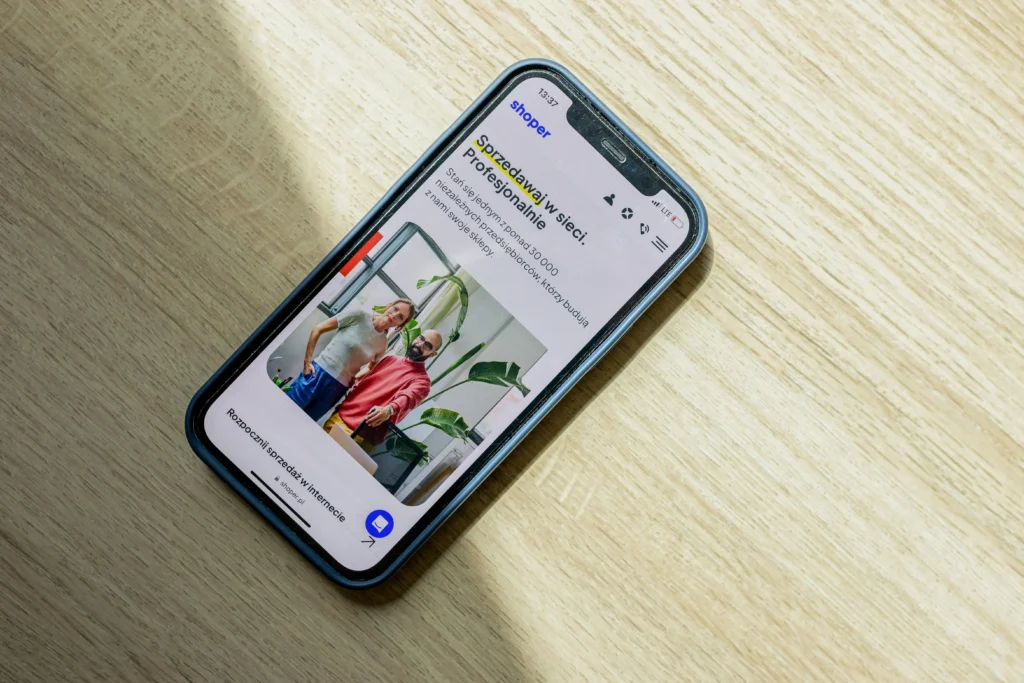
Introduction
Mobile shopping is no longer just a trend — it’s the fresh standard. In the fitness e-commerce industry, clients are browsing, comparing, and purchasing products through smartphones and tablets. If your digital fitness store isn’t optimized for mobile devices, you may be dropping a big share of potential buyers.
With mobile usage transcending desktops in digital retail, giving a smooth mobile experience is critical. It doesn’t just refine sales; it also develops trust, raises brand loyalty, and supports your store’s ranking higher in search engines.
In this article, you’ll discover how to optimize your fitness e-commerce website for mobile consumers using easy language and actionable tips. Whether you sell workout gear, fitness apparel, supplements, or digital fitness programs, these footsteps will support you develop a mobile-first online store that drives conversions.
Why Mobile Optimization Is Important in Fitness E-commerce
More people shop for fitness products on their phones than ever before. This includes:
- Home gym equipment
- Activewear
- Fitness apps and programs
- Supplements and health tools
If your site isn’t mobile-friendly, users may:
- Leave the site immediately
- Have difficulty completing a purchase
- Select a competitor with a better mobile experience
Mobile optimization improves:
- User satisfaction
- Conversion rates
- SEO rankings
- Site speed and performance
Step 1: Use a Responsive Website Design
A responsive website instinctively modifies to fit unalike screen sizes. Whether your client uses a phone, tablet, or desktop, the layout stays clean and functional.
What to focus on:
- Flexible images and text blocks
- Easy-to-read font sizes
- Navigation menus that work well on smaller screens
- Avoiding horizontal scrolling
A responsive design ensures your fitness product pages, checkouts, and banners look perfect on all devices.
Step 2: Speed Up Your Mobile Site
Mobile users expect fast loading times. If your website takes more than 3 seconds to load, most visitors will depart.
Ways to increase mobile speed:
- Compress images without losing quality
- Minimize JavaScript and CSS files
- Use lazy loading for images
- Enable browser caching
- Use a lightweight theme or template
Fast-loading pages not only improve user experience but also help your site rank better in Google search results.
Step 3: Simplify Mobile Navigation
Fitness buyers on mobile devices want to find what they require quickly. Complex menus and long loading times can disturb users.
Tips to improve navigation:
- Use a simple, collapsible mobile menu
- Include a clear search bar
- Add category filters for gear, apparel, supplements, etc.
- Highlight bestsellers or trending items
- Place important pages (cart, login, checkout) in easy-to-tap areas
Organizing your store properly helps mobile visitors move through your site and make purchases without confusion.
Step 4: Optimize Product Pages for Mobile
Your product pages are where buying decisions happen. On mobile, they must be clean, fast, and engaging.
Elements to include:
- Large product images that zoom easily
- Clear and short product descriptions
- Price displayed at the top
- “Add to Cart” button visible without scrolling
- Tabs for size guides, ingredients, or specifications
- Customer reviews with easy scrolling
Ignore messy designs and long paragraphs. Make sure each action (like buying, sharing, or saving a product) is achievable with one or two taps.

Step 5: Make Checkout Fast and Easy
A long or confusing checkout process leads to cart abandonment, especially on mobile. Fitness shoppers want quick and secure transactions.
How to simplify checkout:
- Offer guest checkout (no mandatory account creation)
- Auto-fill address and payment fields
- Use a progress bar to show steps
- Insert mobile phone wallet options like Google Pay or Apple Pay
- Show shipping costs early
- Send order confirmation immediately after purchase
The smoother the process, the more sales you’ll make — especially for repeat fitness shoppers.
Step 6: Use Mobile-Friendly Images and Videos
Images and videos help fitness products sell, but if they’re not optimized for mobile, they can slow your site or break the layout.
Tips for mobile media:
- Use compressed, high-quality JPEG or WebP formats
- Resize for mobile screens (no oversized images)
- Add text overlays for key product features
- Use vertical videos that fit phone screens
- Avoid autoplay with sound
This approach creates a more visual and interactive shopping experience without slowing down mobile performance.
Step 7: Add Mobile-Specific CTAs (Calls to Action)
Clear calls to action guide mobile users through the buying process. Your fitness store should highlight CTAs that are easy to tap and stand out on small screens.
Good mobile CTAs include:
- “Add to Cart”
- “Buy Now”
- “View More Sizes”
- “Join Our Fitness Challenge”
- “Subscribe to Nutrition Plan”
Use bold colors, avoid tiny buttons, and place them where users naturally scroll on mobile.
Step 8: Make Your Store Searchable on Mobile
Many fitness clients come to your store seeking something specific like “resistance bands” or “protein powder.” If your website search is weak, they’ll leave swiftly.
How to improve search:
- Insert a visible search bar on all pages
- Use smart search features (autocomplete, suggestions)
- Make product filters easy to use on mobile
- Sort results by bestsellers, price, or reviews
- Include voice search if possible
Supporting users to search for the right product fast will lessen bounce rates and improve sales.
Step 9: Optimize for Voice Search and Mobile SEO (Search Engine Optimization)
More mobile users now use voice commands to search for products. SEO strategies for mobile are different than desktop, so you need to optimize accordingly.
Mobile SEO best practices:
- Use natural language and questions in product titles
- Focus on long-tail keywords like “eco-friendly yoga mat for beginners”
- Add mobile metatags and structured data
- Optimize title tags and alt text
- Submit a mobile sitemap to Google
These techniques will help your fitness store rank higher in mobile searches and increase organic traffic.
Step 10: Ensure Mobile Security and Trust
Mobile shoppers want to feel safe entering their information. Developing beliefs is essential, especially in the health and fitness market.
How to improve security and trust:
- Use HTTPS encryption site-wide
- Display security badges and accepted payment logos
- Include trust signals like return policies and shipping details
- Provide clear customer support contact
- Link to privacy policy and terms
The more professional and secure your site feels, the more likely users are to complete their purchase.
Final Thoughts
Mobile buyers lead the fitness e-commerce space in 2025. If your store isn’t improved for smartphones, you’re losing out on valuable sales and honest clients. From quicker loading speeds and simplified navigation to mobile-friendly product pages and secure checkout, every detail matters.
By following the footsteps outlined in this blog, you’ll:
- Improve the user experience
- Increase conversion rates
- Boost mobile traffic through better SEO
- Build long-term trust with your audience
Start making your fitness e-commerce store mobile-first today and turn browsing customers into buying customers—anytime, anywhere.
Recent Posts


Is One-Click Checkout Becoming Essential for U.S. Online Stores?

Why Is ‘Buy Now, Pay Later’ So Popular with U.S. Gen Z Shoppers?


